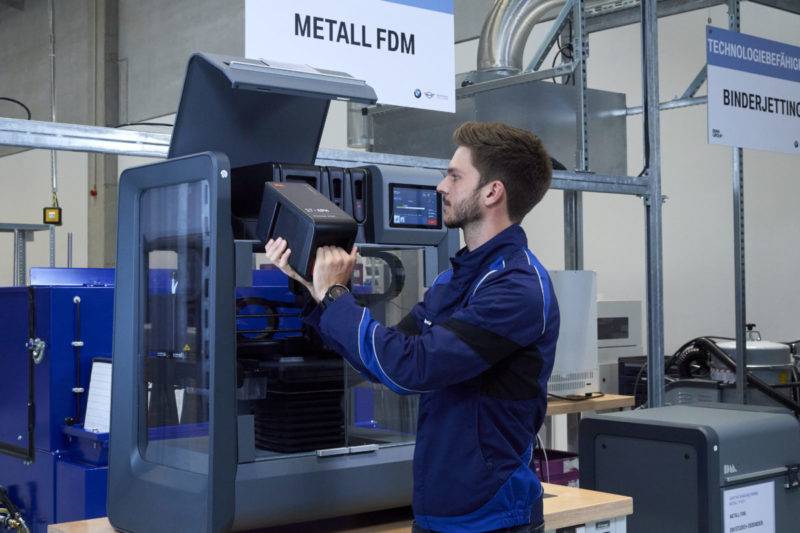The automotive industry remains at the forefront of manufacturing technology, with sporting events such as F1 acting as test-beds for exciting innovation. At the same time, consumer demand for cleaner, safer and more automated vehicles is also driving change in the market. New and emerging technologies are at the forefront of this change. From artificial intelligence (AI) to 3D printing, technology is changing the way we design, manufacture and drive vehicles.
Since the concept of 3D printing, also known as additive manufacturing, was proposed in the late 1970s, the market for this technology has grown rapidly and is projected to be worth US$6.5bn by 2024. The evolution of 3D printing in the automotive industry indicates that it will have an increasingly significant role to play in the design and production of previously unachievable components, the provision of replacement parts on demand and the increase in end-user customisation.
In many respects, additive manufacturing changes the rules for manufacturers, and companies need to adapt to remain ahead. The same applies to Intellectual Property (IP) right holders, and the question for automotive manufacturers is how to adapt their IP strategy in light of 3D printing to drive this change rather than being a passenger.
3D printing is the definition of a disruptive technology which challenges old ways of doing things, while opening up a wealth of opportunities. Additive manufacturing opens the door to the creation of complex geometries that were previously unattainable using conventional manufacturing methods. This allows the fabrication of new parts that are stronger, lighter or more efficient than those previously employed. 3D printing also enables innovative approaches to manufacturing and distribution, with local suppliers, fabrication plants or end users able to ‘download’ 3D printed parts at the touch of a button. This simplification of complex supply chains saves time, money and CO2.
Given the competitive advantages this technology affords, it’s unsurprising that automotive manufacturers are rushing to embrace it, whether it be Porsche introducing 3D printed pistons or BMW opening a campus aimed at ‘industrialising’ 3D printing. There’s no doubt that those who embrace 3D printing and position themselves at the forefront of the changes it will bring will have a competitive advantage.
A perfect IP storm
However, just as additive manufacturing changes the way automotive companies manufacture, it also impacts the way in which businesses should be protecting their IP rights. On top of this, additive manufacturing is also predicted to increase the likelihood that the strength of these IP rights will be tested. Whereas previously a counterfeiter would need a high degree of technical competence and a replica production process to fabricate an infringing part—with 3D printing the barriers to entry for counterfeiters are lowered significantly, making it easier to produce counterfeit parts. These two factors are expected to create a perfect storm for IP rights holders in the coming years and companies that have not updated their IP strategy to take account of the challenges posed by additive manufacturing are likely to lose out.
As more companies explore the benefits of manufacturing using 3D printing, more patent holders may find that traditionally-drafted patents are unsuitable for protecting their innovation against 3D printing infringers. It is critical that patents drafted to a tangible product suitable for being additively manufactured are drafted with the possibilities and threats posed by 3D printing in mind.
A first threat to traditionally-drafted patents is the possibility for altering a component’s structural arrangement using additive manufacturing. As is well acknowledged, additive manufacturing enables new part geometries, and the combination or integration of previously separate components in different ways. The upshot of this is that product patents drafted with only traditional manufacturing methods in mind may not provide adequate protection for the same product when additively manufactured.

Another central issue is that when a patent is granted to, for example, a new piston head, a traditionally-drafted patent may only relate to the physical version of that product. 3D printing relies on digital versions, or the “digital twin” of the product, as CAD or other software files, which are used to instruct the printer how to fabricate the product. The software file of the new piston head could be sent from a design centre in Japan to a production facility in the US in seconds, before being downloaded and printed. If the traditionally-drafted patent only relates to the physical version of the piston and not its ‘digital twin’, it may be unsuitable for controlling the distribution of the digital twin. This may result in the patent owner having limited legal recourse to control distribution of the digital twin for an infringing product.
Similarly, traditional intellectual property filing strategies have tended to focus on a select few countries including important manufacturing hubs. Given that 3D printing may act to distribute manufacturing, intellectual property strategies will need to adapt to ensure effective protection is provided in the territories in which infringement is likely to occur.
Issues arising from some of these challenges are already playing out in other industries, such as the medical devices industry. Looking further back, parallels can also be found in the music and entertainment industry.
IP laws were drafted many years ago, before digital design files were in common use. There are a number of questions still undecided on how IP laws will interact with issues arising from additive manufacturing. Although there is a large amount of uncertainty, one thing that is clear is that traditional approaches to IP preparation and filing may not provide the best protection against 3D printing infringers. Adaptation of IP strategies is therefore required to best protect your interests in a 3D printing world. These strategies must be designed with knowledge of, and recognizing the possibilities provided by, additive manufacturing.
An IP strategy prepared with additive manufacturing in mind will be best placed to protect against any risks and allow companies to maximise the opportunities that this fast-growing manufacturing technology provides. Companies that do not adapt their IP strategies now to accommodate 3D printing are likely to be left behind.
Source: www.automotiveworld.com



